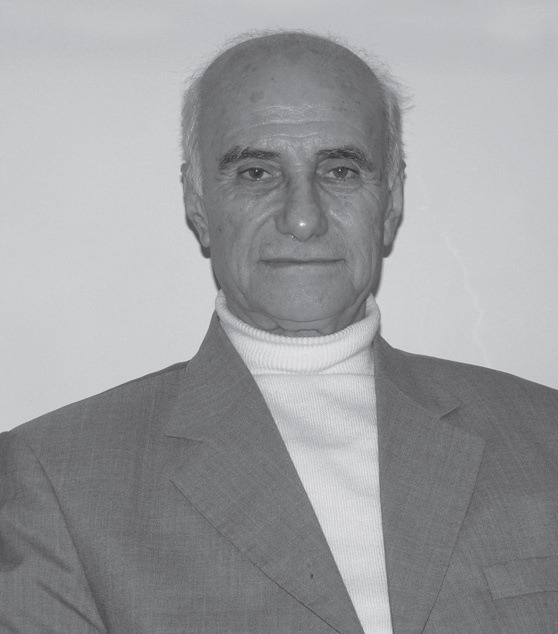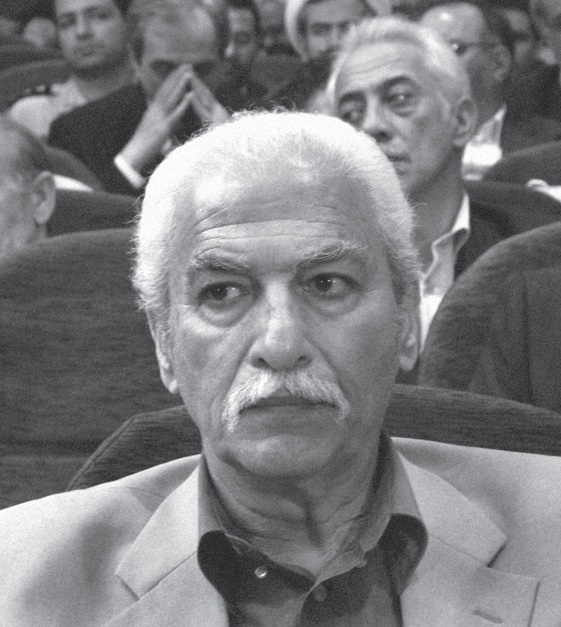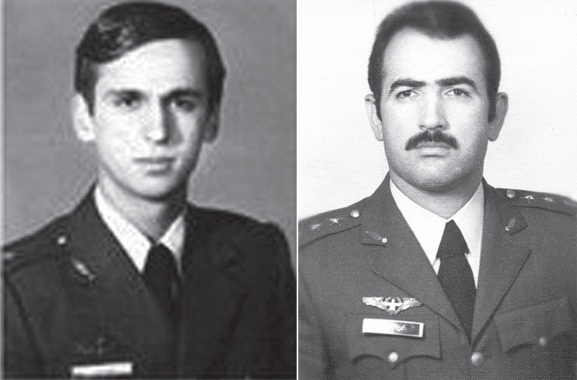Air Raid to Al-Waleed (14)
The Story of Demolishing Fighters and the Equipment in Al-Waleed Triple Military Bases Known as H-3
2016-4-10
Air Raid to Al-Waleed (H-3)
The Story of Demolishing Fighters and the Equipment in Al-Waleed Triple Military Bases Known as H-3
By: Brigadier General Ahmad Mehrnia
Tehran, Sooreh Mehr Publications Company
2010 (Persian Version)
Translated by: Zahra Hosseinian
On Thursday April 4th 1981, with leadership of Major Baratpour, H-3 or Al-Waleed Operation was implemented at the time of Col. Pilot Mahmoud Qeydian's operation deputy in IRIAF. It had been designed and planned by Col. Pilots Bahram Hoshyar, Fereidoun Izadseta, Col. Parviz Pirooz, director of information, Col. Abdul Ali Qasemian, director of information deputy, Col. Ali Dehnadi and Col. Rasoul Hoshyar, operation deputy. And it added a golden page to the glorious history book of Air Force in the war and developed a big question in the minds of air operation designers and pilots of the world, long years: how such a complex and seemingly impossible operation was done? It was an operation that its kind less can be found in the history of air warfare. It was a successful flight which led to destroy a large number of enemy's aircrafts (the lowest reported figures had been destruction of 48 helicopters and different aircrafts, especially Tupolev-16 and 22 at the main base and two sub-bases of H-3) and since then, Saddam and his agents didn't feel safe about air force attacks of Islamic Republic of Iran in any part of Iraq.


Second Brigadier General Ali Dehnadi and Second Brigadier General Rsoul Hoshyar, 2008
The mission lasted about four hours and fifty minutes, which was an unprecedented record in aerial combat with employed facilities! But due to the confidentiality of parts of the operation, various interpretation of it spread in different media and even among colleagues, which could reduce the importance and contradiction in the performance of a robust team in a surprisingly operation. Today, after passing 29 years and overthrowing of the Baathist regime in Iraq, it is hoped that we can show a more complete picture of the operation to our young colleagues and people who loved their country, in particular the present and future generation, so that it will be a lesson for the posterities. In addition, we can do extraordinary things with thinking and existing equipment, "if we want"; things that get the enemies a blow in, while surprise them.
It should be mentioned that events, such as the consequences of Nojeh Base coup, cleansings and war casualties had been caused the number of organizational pilots of Nojeh air base was very limited and sending pilots from other bases became necessary to defense against Iraqi forces' attacks. For this reason, a number of participants in the H-3 operation was organizational pilots of other bases, who were present in the base as agents. Their name were as follows:
|
Names of flight group involved in the operation |
||
|
position |
front cabin |
rear cabin |
|
Number 1 |
Major Farajollah Baratpour |
First Lt. Mohammed Javanmardi |
|
Number 2 |
Lt. Col. Qasim Pourgolchin |
First Lt. Mohammad Reza Azarfar[1] |
|
Number 3 |
Major Nasser Kazemi |
First Lt. Ebrahim Pourdan |
|
Number 4 |
Capt. Gholam Abas Khosravi Rezaei |
Mohammad Ali Akbarpour Sarabi |
|
Number 5 |
Capt. Mahmoud Eskandari |
Kaveh Koohpayeh Araghi |
|
Number 6 |
Major Mahmoud Khazraei |
First Lt. Asghar Bagheri |
|
Number 7 |
Major Manouchehr toosi |
Capt. Mohammad Hossein Nikookar |
|
Number 8 |
Major Manouchehr Ravadgar |
First Lt. Ahmad Soleimani |
Flight number 5: Sub Leader

Brigadier General Farajollah Baratpour and Manouchehr Ravadgar (Major)
A Phantom, as a reservation, must accompany the group until taking off the runway, i.e. up the flight group runway. The pilot of these aircrafts were:
First Lt. Iraj Mohebi in the front cabin / Lt. (unknown) in the rear cabin.

Col. Pilot Mahmoud Eskandari, liberated prisoner and pilot of rear cabin, Kaveh Koohpayeh Araghi
Two aircrafts also were considered as reservation flights; they must accompany the group until after second stage of refueling and near the North West of the country border; and if they won't be needed, return to base. The pilots' names of these two reservation flights were:
- First Reservation: Capt. Mohammad Atighehchi in the front cabin / First Lt. Ali Kadkhodaie in the rear cabin.
- Second Reservation: Capt. Ibrahim Fakhar in the front cabin / First Lt. Ali Ganj in the rear cabin.
Amir Second Brigadier General pilot Farajollah Baratpour, the leader of two flight groups says:
"At March 19th 1981, I and Lt. Col. Golchin, commander of fighter third base, were summoned to the commander's office of Air Force in Tehran. Fakoori talked about implementation of mentioned mission at the date of April 4th 1981. It was supposed that no one, except us, was not aware of the operation date. Because of using tanker aircrafts for delivering fuel and modern F-14 and F-5 fighters in the operation, several days later a meeting was held in the command post of Air Force with the presentation of responsible officials of these units. At the meeting, all officials were justified about their responsibility in the operation. And because the Nowruz came close, they insisted to know the time of operation to adjust Nowruz programs of their units, but that was not possible. So, without being aware of the place and date of the mission, they left the meeting and waited until the day and hours of operation comes.
I was operation deputy of base and in addition to the heavy responsibility of operation, always would think about how to carry out this unprecedented operation better and safer. If I would command that ten aircrafts to be armed at operation night, peoples must be suspected. At that time evidences indicated that some of our sensitive overseas operations would leak out. Pilots would say that before they reach to the target or the enemy's defensive weapons, the enemy would strike them on their way. Unfortunately, I should say that this was true, because a number of them were arrested and punished during the war.
So, I decided to arrange several plans to load a number of aircrafts with different ammunition that I was intended. A few days before the mission I ordered five aircrafts to be equipped with considered ammunition. Then I pretended that the mission has been canceled, but I asked the battalion of ammunition maintenance not to disassemble the ammunition. I said we wait to see what will happen! I did this two or three times else, so that we had exactly ten ready-to-operation aircrafts until the day of operation, while no one would guess whether there will be a mission eventually! Because this event persisted a few days, nobody noticed the main intention.
At March 31th 1981, the operational instructions of mission, with all attachments and appendices, were sent from headquarters in Tehran to fighter third base in Hamedan by special courier, and implementation of operation was established.
At April 2th 1981, Capt. Iraj Osareh, who was one of the main candidates for flying, asked me a leave. I wanted very much to tell him it is not possible and he should stay in the base for an important mission, but it was not advisable. It looked like that my disagreement with his request led to leaking out the mission and all realized that big news is coming, so I signed his leave paper.
Three days to operation, the Commander of Air Force phoned me and asked in riddles: 'Which pilots do you want to be sent from Tehran or other bases?' I said: 'No one needs. I will plan using the pilots who are present in the base.' He insisted several times that he had more skilled guys in mind, but I said, sir, there is no need. Finally, mentioning the name of one of the relatively weak pilots, he asked: 'would not wish to appoint such a person in the flight group?' I said, 'If need be, I'll also do that!' However, I called the considered group at afternoon of operation night and with a brief explanation, informed them the implementation of an important operation without disclosing the place of it; I asked them to go to rest completely, so that to be ready for this mission."
To be continued…
[1]. Major Pilot MR Azarfar, who was recruited in Air Force in 1973, accompanied with the pilot of his rear cabin, lt. Yazdan Sakha'ii, going to the mission of air cover at the south of country from Bushehr air base, on the evening of June 11th 1985, One night of Ramadan, by hearing the sound of alarm Alert (state of alert); and at 23:38, the warm azure waters of Persian Gulf became their permanent tomb. The memory of these two great martyr may it be eternally, who sacrificed their lives and changed the darkness of Persian Gulf nights to the brightness of loving God!
Number of Visits: 9043








The latest
Most visited
Attack on Halabcheh narrated
With wet saliva, we are having the lunch which that loving Isfahani man gave us from the back of his van when he said goodbye in the city entrance. Adaspolo [lentils with rice] with yoghurt! We were just started having it when the plane dives, we go down and shelter behind the runnel, and a few moments later, when the plane raises up, we also raise our heads, and while eating, we see the high sides ...The Arab People Committee
Another event that happened in Khuzestan Province and I followed up was the Arab People Committee. One day, we were informed that the Arabs had set up a committee special for themselves. At that time, I had less information about the Arab People , but knew well that dividing the people into Arab and non-Arab was a harmful measure.Kak-e Khak
The book “Kak-e Khak” is the narration of Mohammad Reza Ahmadi (Haj Habib), a commander in Kurdistan fronts. It has been published by Sarv-e Sorkh Publications in 500 copies in spring of 1400 (2022) and in 574 pages. Fatemeh Ghanbari has edited the book and the interview was conducted with the cooperation of Hossein Zahmatkesh.Is oral history the words of people who have not been seen?
Some are of the view that oral history is useful because it is the words of people who have not been seen. It is meant by people who have not been seen, those who have not had any title or position. If we look at oral history from this point of view, it will be objected why the oral memories of famous people such as revolutionary leaders or war commanders are compiled.

